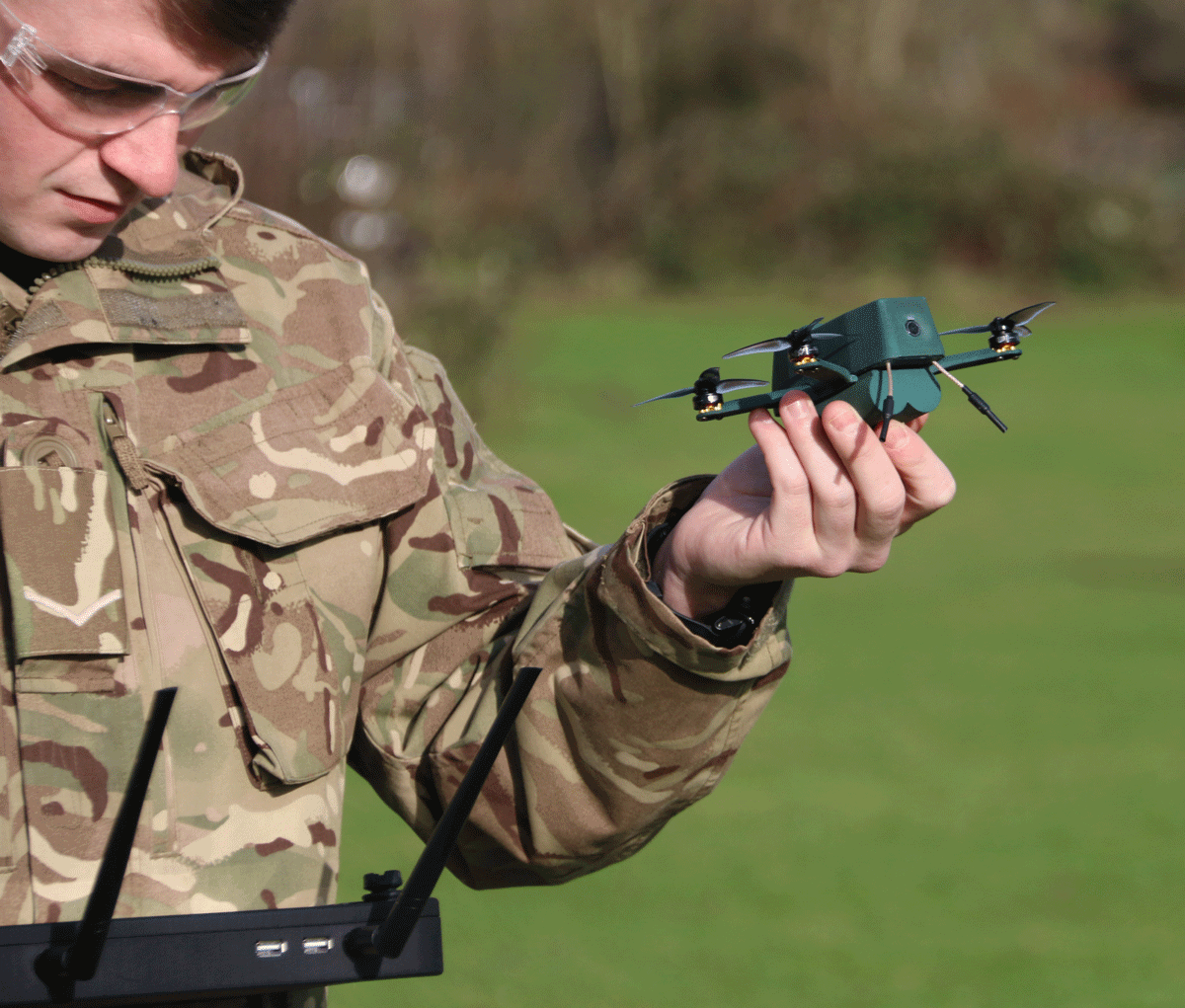British Army recruits 30 nano ‘bug’ drones as battlefield spies
Head of armed forces predicts growing numbers of 'robot soldiers’

Your support helps us to tell the story
From reproductive rights to climate change to Big Tech, The Independent is on the ground when the story is developing. Whether it's investigating the financials of Elon Musk's pro-Trump PAC or producing our latest documentary, 'The A Word', which shines a light on the American women fighting for reproductive rights, we know how important it is to parse out the facts from the messaging.
At such a critical moment in US history, we need reporters on the ground. Your donation allows us to keep sending journalists to speak to both sides of the story.
The Independent is trusted by Americans across the entire political spectrum. And unlike many other quality news outlets, we choose not to lock Americans out of our reporting and analysis with paywalls. We believe quality journalism should be available to everyone, paid for by those who can afford it.
Your support makes all the difference.Thirty “bug” drones that can be held in the palm of the hand have been bought by the British Army as part of its drive to deploy more “robot soldiers” on the battlefield.
The nano unmanned aerial vehicles (UAV) weigh only 196g, can fly for 40 minutes on one charge and are capable of spying on targets up to 2km away with a high resolution video camera.
They are also powerful enough to fly at speeds of up to 50mph and cope with weather conditions including strong winds, rain and snow, according to developers BAE Systems and the UK-based firm UAVTEK.
It comes after the head of the UK’s armed forces, General Sir Nick Carter, suggested that as many as 30,000 autonomous or remote-controlled machines could be fighting alongside humans by the 2030s as the armed forces modernise.
There were more than 300 "mini drones" in service in the UK armed forces between 2013 and 2016 but cutbacks saw their numbers reduced by more than a third in 2017.
Troops in Afghanistan described the kit as a "lifesaver" but campaign groups such as Drone Wars argue that the greater use of UAVs leads to a “PlayStation mentality” and lowers the threshhold for using lethal force.
The Ministry of Defence said last year it had committed £66m to "fast-track military robotic projects onto the battlefield" including mini drones that would provide troops with "an eye-in-the-sky to give them greater awareness to outmanoeuvre enemies".
In May 2019 the MoD ordered 30 hand-launched Black Hornet Mk3 nano UAVs at a reported total cost of £1.4m, or around £45,000 each.
It has now turned to the "Nano 1A UAV Quadcopter Bug", which UAVTEK claims costs only a tenth of the price of the Black Hornet.
BAE Systems said it was "the only nano-UAV able to cope with the uncompromising weather" during the Army Warfighting Experiment event held by the MoD in November.
"In even the toughest weather, the Bug can deliver vital tactical intelligence on what’s around the corner or over the next hill, working autonomously to give troops a visual update," said BAE technologist James Gerard.
Howard Humphries, CEO of the Cotswolds-based UAVTEK, said: “We are very proud of the fact that the Bug is designed and built in the UK. This demonstrates that the UK drone industry can produce world-class unmanned systems."



Join our commenting forum
Join thought-provoking conversations, follow other Independent readers and see their replies
Comments